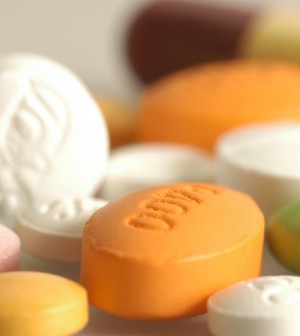- Understanding the Connection Between Anxiety and Depression
- How Daily Prunes Can Influence Cholesterol and Inflammation
- When to Take B12 for Better Absorption and Energy
- Epsom Salts: Health Benefits and Uses
- See What Saffron Can Do for Sleep and Heart Health
- 6 Common Mistakes to Avoid Before Your Physical
- Can Sweating Really Help You Beat a Cold?
- Strengthening Your Relationship: Practical Strategies
- Skip Storing This Everyday Product in the Fridge Door
- Green Tea + B3 Pairing May Boost Brain Health
Health Highlights: Oct. 19, 2015


Here are some of the latest health and medical news developments, compiled by the editors of HealthDay:
Tougher Penalties for Uninsured Start in 2016
Americans will face much stiffer penalties for having no health insurance next year.
In 2016, the punishment for being uninsured for the full 12 months will increase to either $695, or 2.5 percent of taxable income, whichever is greater. This year, it was $325, or 2 percent of income, the Associated Press reported.
The Obama administration is being urged to emphasize the higher penalties, to convince more uninsured people to get coverage, the wire service reported.
Currently, subsidized consumers pay about $100 a month of their own money. That means that people could get six months of coverage with the $695 they would otherwise pay for not having insurance, the AP reported.
So far, efforts to convince people to get coverage have focused on the benefits of having insurance, such as subsides that cover about 70 percent of monthly premiums, a financial safeguard against an accident or sudden illness, and better access to health care.
But highlighting the penalties could help sway those who are skeptical about the value of health insurance, some experts say.
“Given that the penalty is larger, it does make sense to bring it up more frequently,” Ron Pollack, executive director of Families USA, a liberal advocacy group, told the AP.
“More and more, people are mentioning the sticks as well as the carrots,” Katherine Hempstead, director of health insurance coverage for the Robert Wood Johnson Foundation, told the AP.
The threat of penalties resonates with uninsured people, who tend to be low- and middle-income workers who are financially strapped, and many people say penalties are their main reason for signing up, she said.
“It’s the law and they don’t want to pay the penalty,” Hempstead told the AP.
“We need to be make sure that we are very clear and explicit about that $695 penalty so people understand the choice they are making,” Obama administration spokeswoman Lori Lodes told the AP.
—–
Excessive Drinking Cost U.S. $249 Billion in 2010: Study
Excessive drinking cost the United States $249 billion — $2.05 a drink — in 2010, according to a federal government study.
That’s a significant increase from $223.45 billion — $1.90 a drink — in 2006, the Centers for Disease Control and Prevention said.
Most of the costs are due to lower worker productivity, crime, and treating health problems caused by excessive drinking. Two of every $5 of costs — more than $100 billion — were paid by governments.
Seventy-seven percent of the costs were related to binge drinking, defined as five or more drinks on one occasion for men or four or more drinks on one occasion for women.
“The increase in the costs of excessive drinking from 2006 to 2010 is concerning, particularly given the severe economic recession that occurred during these years,” study author Dr. Robert Brewer, head of CDC’s Alcohol Program, said in an agency news release.
“Effective prevention strategies can reduce excessive drinking and related costs in states and communities, but they are under used,” he added.
Excessive drinking causes 88,000 deaths in the U.S. each year, including 10 percent of deaths among working-age people ages 20-64, the CDC said.
The study found that excessive drinking cost states and the District of Columbia a median of $3.5 billion each in 2010, ranging from $488 million in North Dakota to $35 billion in California.
The per person cost of excessive drinking was highest in Washington D.C. at $1,526 vs. the national average of $807, while New Mexico had the highest cost per drink at $2.77 vs. the national average of $2.05, the study found.
Copyright © 2026 HealthDay. All rights reserved.










